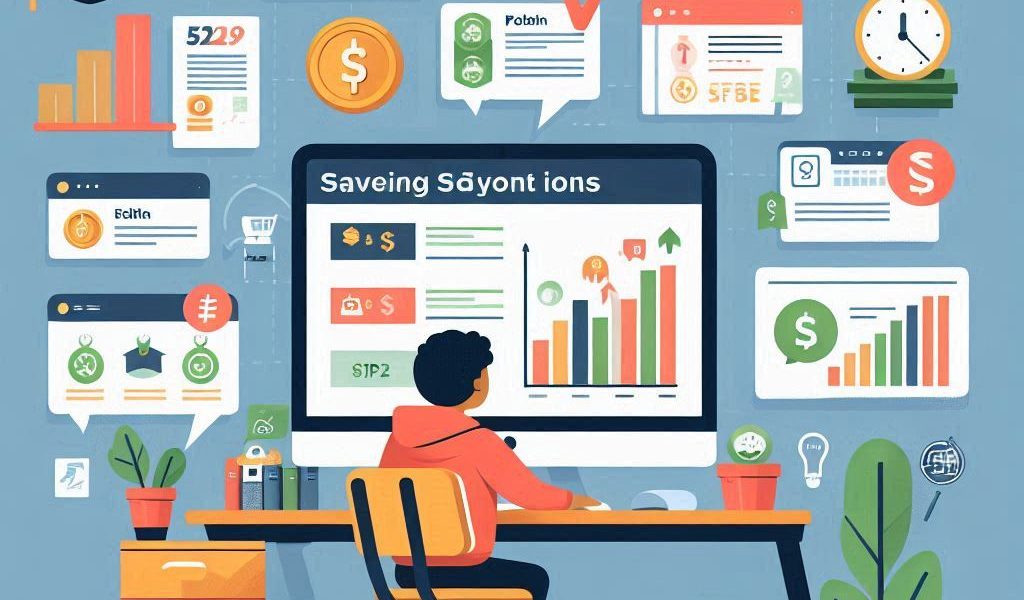One of the most significant financial goals for parents is to save for their children’s education. With the rising cost of education worldwide, planning ahead is essential to ensure that you can provide your child with the best possible opportunities without facing financial stress. Whether your child is still a toddler or nearing the end of their school years, starting a saving plan for education early can make a world of difference.
In this blog, we’ll explore the best saving plans for children’s education, highlight the benefits of each, and provide guidance on how to choose the right plan for your child’s future.
Why Saving for Children’s Education is Crucial
Education is one of the most valuable gifts you can give your child. However, the cost of education, especially higher education, continues to rise each year. By setting up an education saving plan early, you give yourself the time and opportunity to grow your savings and avoid financial strain later.
Here’s why early planning for your child’s education is important:
- Rising Costs: Education costs, including tuition, books, and living expenses, have been increasing steadily. By starting early, you benefit from compound interest, which helps your money grow.
- Less Financial Stress: Saving early for education reduces the burden on your finances when your child is ready for college or university.
- Tax Benefits: Certain education saving plans come with tax benefits, allowing you to save more over time.
Types of Saving Plans for Children’s Education
There are several saving plans available to help you save for your child’s education. Depending on your financial goals, risk tolerance, and time horizon, here are the best saving plans you should consider:
1. 529 College Savings Plans (U.S.)
If you’re based in the U.S., a 529 Plan is one of the best ways to save for your child’s education. A 529 Plan is a tax-advantaged saving plan that allows you to save for future education expenses. The money you invest in a 529 Plan grows tax-free, and withdrawals for qualified educational expenses are also tax-free.
Why Choose a 529 Plan?
- Tax Benefits: Earnings grow tax-free, and withdrawals for education-related expenses (tuition, books, room and board) are tax-free.
- State-Specific Benefits: Some states offer tax deductions or credits for contributions made to a 529 Plan.
- Flexible Use: Funds can be used for tuition, fees, and other educational costs at eligible institutions, including K-12 schools, colleges, and universities.
2. Public Provident Fund (PPF) (India)
In India, the Public Provident Fund (PPF) is one of the safest and most popular saving options for long-term goals such as children’s education. PPF offers a fixed interest rate and tax advantages under Section 80C.
Why Choose PPF for Education Savings?
- Government-Backed: Being a government-backed scheme, PPF is one of the safest investment options.
- Tax Benefits: Contributions to PPF are eligible for tax deductions, and the interest earned is tax-free.
- Long-Term Growth: The lock-in period is 15 years, making it ideal for long-term goals such as funding your child’s higher education.
3. Child Education Plans (Insurance Plans)
Some insurance companies offer Child Education Plans specifically designed to provide financial support for children’s education. These plans typically combine investment with life insurance, ensuring that the policyholder’s child is supported financially even in the event of an unfortunate incident.
Why Choose a Child Education Plan?
- Insurance Protection: These plans provide life insurance coverage, ensuring that your child’s education is funded even if something happens to you.
- SIP Option: Many plans allow systematic investment plans (SIPs), allowing you to contribute regularly and build a corpus over time.
- Financial Security: The policy ensures that a lump sum amount is available when your child reaches the age of higher education.
4. Fixed Deposits (FDs) for Education
In India and other countries, Fixed Deposits (FDs) are a common and low-risk saving option for funding your child’s education. FDs are low-risk, fixed-term investments that offer guaranteed returns.
Why Choose Fixed Deposits for Education?
- Guaranteed Returns: Fixed deposits offer a guaranteed return, making them a safe and secure investment option.
- Liquidity: You can choose the maturity date based on your child’s education timeline, ensuring that funds are available when needed.
- No Market Risk: Fixed deposits are not affected by market fluctuations, making them a risk-free saving option.
5. Sukanya Samriddhi Yojana (India)
For parents of girl children in India, the Sukanya Samriddhi Yojana (SSY) is an excellent saving scheme designed to fund a girl child’s education and marriage. With its high-interest rate and tax benefits, SSY is a great way to ensure that your daughter’s future is financially secure.
Why Choose Sukanya Samriddhi Yojana?
- High Interest: SSY offers one of the highest interest rates among government-backed schemes, making it a great option for long-term saving.
- Tax Benefits: Contributions qualify for tax deductions, and the interest earned is tax-free.
- Targeted for Girls: Specifically designed for the welfare of the girl child, SSY can be used for educational and marriage expenses.
6. Mutual Funds for Education (Systematic Investment Plan – SIP)
For those with a longer investment horizon, mutual funds can be an excellent option. Through a Systematic Investment Plan (SIP), you can invest a fixed amount regularly in equity or debt mutual funds to grow your wealth over time.
Why Choose Mutual Funds for Education Savings?
- Higher Returns: Equity mutual funds generally offer higher returns compared to traditional savings options, making them ideal for long-term goals like children’s education.
- Flexibility: You can choose from a wide range of mutual funds based on your risk profile and the time frame for your child’s education.
- SIP Convenience: By investing regularly through SIPs, you can start small and build a substantial corpus over time.
7. National Pension Scheme (NPS)
The National Pension Scheme (NPS) is another option available in India for long-term saving. While NPS is primarily used for retirement planning, you can also use it for funding your child’s education due to its flexible withdrawal options.
Why Choose NPS for Education?
- Tax Benefits: NPS contributions are eligible for tax deductions.
- Low-Cost Investment: NPS offers a cost-effective way to invest in both equity and government bonds, providing you with the opportunity to grow your savings at a steady pace.
- Government-Backed: NPS is managed by the government, ensuring transparency and security.
Tips for Effective Saving for Children’s Education
- Start Early: The earlier you start saving, the more time your investments have to grow, thanks to compound interest.
- Set a Target Amount: Estimate the cost of education at the time your child is ready to attend school, college, or university.
- Review Regularly: Periodically review your investment strategy to ensure you are on track to meet your goal.
- Automate Contributions: Set up automatic contributions to your chosen saving plan to ensure consistency and discipline.
Conclusion
Saving for your child’s education is one of the most important financial commitments you will make. With the right saving plan, you can ensure that your child has the financial support they need to pursue their educational dreams without compromising your own financial security. From 529 Plans and PPF to Child Education Plans and SIPs, there are plenty of options available to suit your financial goals and risk tolerance.



